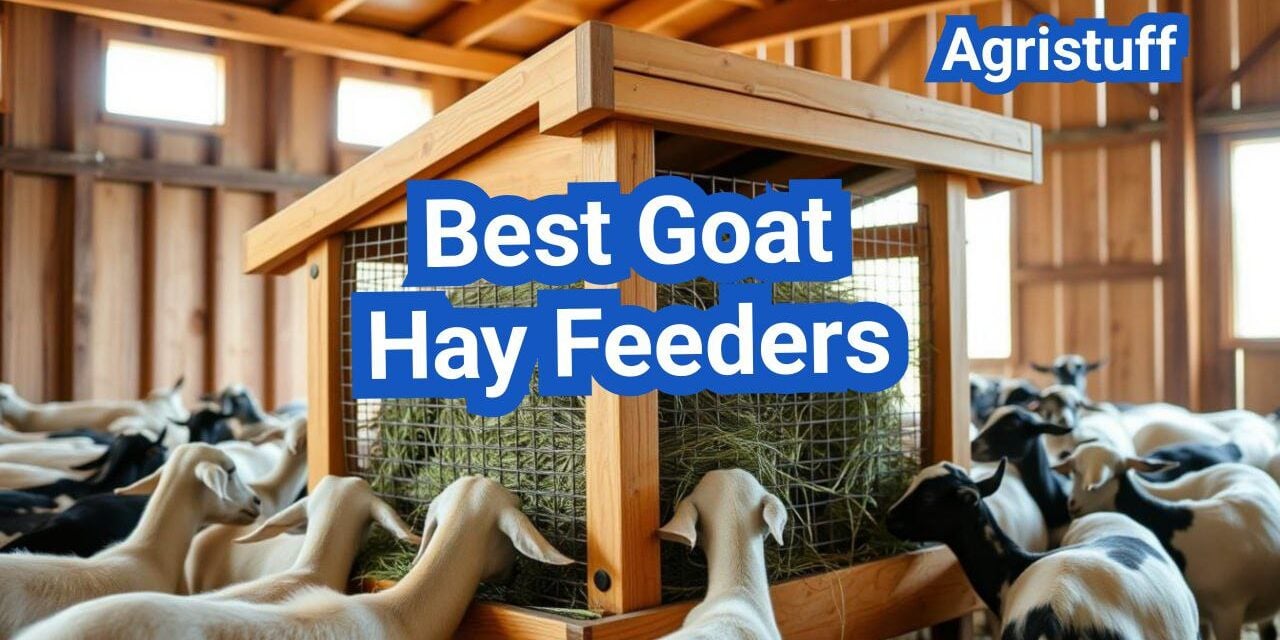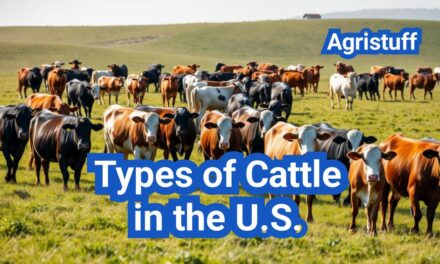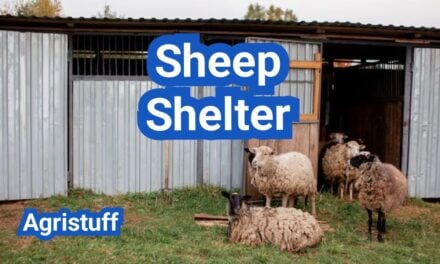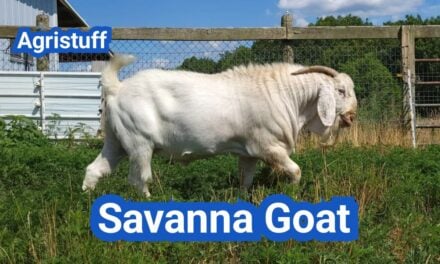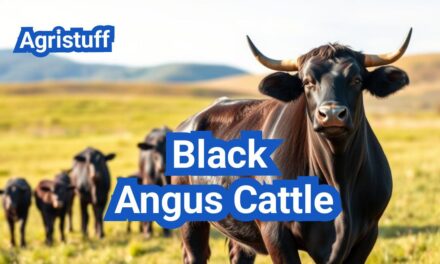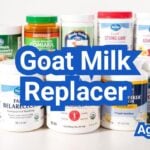Maintaining the health of goats is crucial for any farming operation, and one key aspect is providing them with clean and accessible hay. A well-designed goat hay feeder plays a significant role in achieving this by reducing waste and keeping the hay clean.
Using the right goat hay feeder can significantly impact the overall health and well-being of the animals. By minimizing waste and ensuring the hay remains clean, farmers can help prevent health issues related to poor nutrition.
Key Takeaways
- Proper goat hay feeders are essential for maintaining goat health.
- Effective designs help in reducing waste.
- Clean hay is crucial for the nutritional well-being of goats.
- The right goat hay feeder can improve overall farm efficiency.
- Investing in a quality goat hay feeder is a step towards better animal care.
Why Proper Hay Feeders Are Essential for Goat Health
Goat health is directly linked to the quality of their hay feeders, as these devices help in minimizing hay waste and reducing the risk of diseases. Proper hay feeders are designed to keep the hay clean and dry, away from contaminants that can lead to health issues.
The Problem with Ground Feeding
Ground feeding is a common practice that can lead to numerous health problems for goats. When hay is fed on the ground, it becomes contaminated with dirt, manure, and other harmful substances. This can result in parasitic infections and other diseases. Moreover, ground feeding often leads to hay waste, as goats tend to trample and scatter the hay.
How Quality Feeders Prevent Disease
Quality hay feeders are designed to keep the hay off the ground, reducing the risk of contamination. By preventing goats from coming into contact with soiled hay, these feeders help in disease prevention. Additionally, many modern hay feeders are designed with features that reduce hay waste, ensuring that goats have access to clean hay at all times.
The use of proper hay feeders also promotes healthy eating habits among goats. By allowing them to feed naturally, without the hay being contaminated or wasted, these feeders contribute to the overall health and well-being of the goats.
Economic Benefits of Reducing Hay Waste
Reducing hay waste is not only beneficial for goat health but also has significant economic benefits. When hay is wasted, it represents a direct financial loss for farmers. By using hay feeders that minimize waste, farmers can save money on hay costs over time. Furthermore, healthy goats are more productive, whether in terms of milk production, meat, or breeding, thereby providing additional economic benefits to farmers.
Understanding Goat Feeding Behavior
Goats have unique feeding behaviors that impact the design and functionality of hay feeders. Their natural browsing habits, preferred head position while eating, and the dynamics of competition within a herd all play crucial roles in determining the most effective feeding solutions.
Natural Browsing Habits
Goats are browsers by nature, meaning they prefer to eat leaves, twigs, and shrubs. This natural behavior influences how they interact with hay feeders. In the wild, goats tend to browse at various heights, from ground level to higher branches. When designing or selecting a hay feeder, it’s essential to consider this natural browsing behavior to ensure that the feeder accommodates their instinctive feeding patterns.
Key aspects of natural browsing habits include:
- Flexibility in feeding height
- Preference for variety in forage
- Tendency to browse rather than graze
Head Position and Comfort While Eating
The comfort of goats while eating is directly related to their head position. Goats prefer to eat with their heads in a natural position, which is typically at or slightly below shoulder height. Hay feeders that allow goats to maintain this position without straining their necks or backs are considered more comfortable and effective.
Factors influencing head position and comfort:
- Feeder height and adjustability
- Bar spacing and design
- Accessibility for goats of various sizes
Competition Factors in Herd Feeding
In a herd setting, competition for food can be significant. Dominant goats may monopolize the hay feeder, preventing others from accessing the feed. Understanding these competition factors is crucial for designing or selecting a hay feeder that minimizes conflict and ensures all goats have adequate access to nutrition.
Strategies to reduce competition:
- Multiple feeding stations
- Spacious feeder designs
- Feeders with anti-bullying features
By understanding and addressing these aspects of goat feeding behavior, farmers and goat owners can select or design hay feeders that better meet the needs of their animals, promoting healthier feeding practices and reducing waste.
Key Features of Effective Goat Hay Feeders
Designing or selecting the appropriate goat hay feeder involves understanding several key features that can significantly impact the health and productivity of your goats. Effective goat hay feeders are designed to minimize waste, ensure easy access to hay, and protect the feed from various environmental factors.
Optimal Bar Spacing Measurements
The spacing between the bars of a goat hay feeder is critical. It should be wide enough to allow goats to easily access the hay but narrow enough to prevent them from getting their heads or horns stuck. Typically, the optimal bar spacing for goat hay feeders ranges from 4 to 6 inches, depending on the size and breed of the goats.
Height and Accessibility Considerations
The height at which the feeder is placed is also crucial. It should be positioned in such a way that it is easily accessible to the goats without having to strain their necks or backs. For most adult goats, a feeder height of about 30 to 40 inches from the ground is considered ideal. Additionally, the feeder should be designed to accommodate goats of different sizes and ages.
Weather Protection Elements
Protecting the hay from weather elements such as rain, snow, and direct sunlight is essential to maintain its quality. Feeders with roofs or covers can significantly reduce hay waste by keeping it dry. Some feeders also come with adjustable roofs or can be mounted under a shelter to provide additional protection.
Waste-Reduction Design Features
One of the primary goals of an effective goat hay feeder is to minimize waste. Features such as trays or pans under the feeder to catch fallen hay, slow-feed mechanisms, and designs that allow goats to eat in a natural position can significantly reduce waste. A well-designed feeder can save farmers a substantial amount on hay costs over time.
| Feature | Description | Benefit |
|---|---|---|
| Optimal Bar Spacing | 4-6 inches | Prevents goats from getting stuck |
| Adjustable Height | 30-40 inches | Eases access for goats |
| Weather Protection | Roofs or Covers | Keeps hay dry |
| Waste-Reduction Design | Trays, Slow-Feed | Reduces hay waste |
Types of Goat Hay Feeders Compared

The type of hay feeder you choose for your goats can significantly impact their eating habits and overall well-being. With various designs available, each catering to different needs and preferences, it’s essential to understand the pros and cons of each type.
Wall-Mounted Hay Racks
Wall-mounted hay racks are a popular choice for many goat farmers due to their space-saving design and ability to keep hay clean. They are particularly useful in barns or enclosed areas where wall space is available.
Advantages: They save floor space, reduce hay waste by keeping it off the ground, and are easy to clean.
Disadvantages: They require sturdy walls for mounting, and access might be limited for smaller or weaker goats if mounted too high.
Freestanding Feeders
Freestanding feeders offer flexibility and can be placed in various locations within a barn or pasture. They come in different sizes and can accommodate multiple goats.
Advantages: They are versatile, can be moved as needed, and some models come with features like adjustable heights.
Disadvantages: They can take up more space than wall-mounted options and may require more effort to clean.
Round Bale Feeders
Round bale feeders are designed for large round bales of hay, making them ideal for farmers who purchase hay in this format. They help in reducing waste by allowing goats to eat through the bars.
Advantages: They are efficient for large herds, reduce waste, and can be used for extended periods.
Disadvantages: They are typically more expensive than other types of feeders and require more space.
Slow Feed Hay Nets
Slow feed hay nets are designed to mimic grazing conditions, slowing down the goats’ eating process. They are particularly beneficial for reducing hay waste and promoting healthier eating habits.
Advantages: They promote natural feeding behavior, reduce waste, and can be hung at various heights.
Disadvantages: They require frequent filling, and there’s a risk of goats getting their horns or heads caught if not properly designed.
| Type of Feeder | Space Efficiency | Waste Reduction | Ease of Cleaning |
|---|---|---|---|
| Wall-Mounted Hay Racks | High | High | Easy |
| Freestanding Feeders | Medium | Medium | Moderate |
| Round Bale Feeders | Low | High | Challenging |
| Slow Feed Hay Nets | High | High | Easy |
Top Commercial Goat Hay Feeders for Small Herds
The right commercial hay feeder can make a significant difference in the health and well-being of small goat herds. With various options available, selecting a feeder that minimizes waste, keeps hay clean, and is suitable for the size of your herd is crucial.
VEVOR Wall Mounted Hay Rack
The VEVOR Wall Mounted Hay Rack is a popular choice among small herd owners due to its durable construction and efficient design. It allows for easy installation on walls, saving space and keeping the feeding area organized.
- Made from heavy-duty metal
- Easy wall mounting
- Reduces hay waste
Rugged Ranch Metal Hay Feeder
The Rugged Ranch Metal Hay Feeder is designed with durability in mind, featuring a metal construction that withstands the rigors of goat feeding. Its design promotes clean feeding by allowing hay to be fed through bars, reducing waste.
- Metal construction for longevity
- Bar design minimizes waste
- Easy to clean
Little Giant Gallon Livestock Feeder
The Little Giant Gallon Livestock Feeder is versatile and can be used for various livestock, including goats. It’s designed to be durable and easy to clean, making it a practical choice for small herds.
- Gallon capacity suitable for small herds
- Durable construction
- Easy cleaning
High Country Plastics Wall Feeder
The High Country Plastics Wall Feeder offers a plastic alternative that is lightweight and easy to install. It’s designed for wall mounting, which helps in keeping the feeding area tidy.
- Lightweight plastic construction
- Easy wall installation
- Resistant to rust
Best Commercial Options for Large Goat Herds
Large goat herds benefit significantly from commercial hay feeders designed to minimize waste and maximize accessibility. These feeders are engineered to handle the demands of larger operations, providing durable and efficient feeding solutions.
Tarter Farm Round Bale Feeders
Tarter Farm Round Bale Feeders are a popular choice among large goat herd managers. These feeders are designed to accommodate round bales, reducing waste and allowing multiple goats to feed simultaneously. The sturdy construction and adjustable bar spacing make them suitable for herds of various sizes.
Premier One Gallon Goat Hay Feeder
The Premier One Gallon Goat Hay Feeder offers a compact and efficient feeding solution. Its design allows for easy hanging and adjustment, making it suitable for large herds where space and accessibility are concerns. The feeder’s one-gallon capacity helps in managing hay distribution effectively.
Sydell Heavy-Duty Feeders
Sydell Heavy-Duty Feeders are known for their durability and are designed to withstand the rigors of large herd feeding. These feeders feature heavy-duty construction and are often used in commercial settings. Their design helps in reducing hay waste and allows for easy cleaning.
Behrens Steel Manger Systems
Behrens Steel Manger Systems provide a robust feeding solution for large goat herds. Made from high-quality steel, these systems are designed to be durable and long-lasting. They offer flexibility in terms of configuration and can be adapted to suit different herd sizes and management practices.
When selecting a commercial hay feeder for a large goat herd, it’s essential to consider factors such as durability, ease of use, and the ability to minimize waste. The feeders mentioned above are among the top choices for large operations, offering a range of benefits that can enhance feeding efficiency and overall herd health.
Specialized Goat Hay Feeders

Specialized goat hay feeders cater to specific farming needs, including horned goats and rotational grazing practices. These feeders are designed to address particular challenges faced by goat farmers, enhancing the overall efficiency and health of their goat herds.
Feeders Designed for Horned Goats
For farmers with horned goats, it’s essential to use hay feeders that accommodate their unique physical characteristics. Feeders with wider openings or specifically designed horn slots allow horned goats to eat comfortably without the risk of injury. These designs also help in reducing competition among goats, as they can feed more freely.
Portable Options for Rotational Grazing
Rotational grazing is a beneficial practice that requires portable and adaptable feeding solutions. Portable hay feeders enable farmers to move their goats to different grazing areas easily, promoting land recovery and reducing parasite buildup. These feeders are typically lightweight, durable, and easy to set up, making them ideal for rotational grazing systems.
Combination Hay and Grain Feeders
Some goat farmers prefer using combination hay and grain feeders to simplify feeding routines and ensure a balanced diet for their goats. These feeders have separate compartments for hay and grain, allowing for efficient feeding and minimizing waste. They are particularly useful for small to medium-sized farms where simplifying feeding processes is crucial.
By choosing the right specialized goat hay feeder, farmers can improve the health and productivity of their goats, ultimately enhancing their farming operation’s efficiency and profitability.
DIY Goat Hay Feeder Plans: Simple Designs

For goat owners looking to minimize hay waste, DIY goat hay feeder offer a cost-effective solution. Creating your own feeder can be a straightforward process, requiring minimal materials and expertise.
Bucket Hay Feeder Tutorial
A bucket hay feeder is a simple and effective way to feed your goats. To make one, you’ll need a large bucket, some rope or chain, and a few basic tools. Start by drilling holes in the bottom of the bucket for drainage, then fill it with hay. Suspend the bucket from a sturdy beam or hook, ensuring it’s at a comfortable height for your goats.
PVC Pipe Feeder Construction
PVC pipes are versatile and can be used to create a variety of goat hay feeder designs. One simple plan involves constructing a feeder with PVC pipes and elbows. Cut the pipes to the desired length, assemble the structure, and attach it to a wall or fence. This design allows for easy cleaning and can be adapted to different sizes.
To build a PVC pipe feeder, you’ll need:
- PVC pipes
- PVC elbows
- PVC cement
- Measuring tape
- Hacksaw or pipe cutter
Repurposed Tote Feeder Instructions
Repurposing old totes or containers is another creative way to make a goat hay feeder. Clean and disinfect the tote thoroughly, then cut holes or slots for hay access. You can attach the tote to a fence or wall, or place it on the ground, depending on your preference.
When using a repurposed tote, consider the following:
| Material | Durability | Ease of Cleaning |
|---|---|---|
| Plastic | High | Easy |
| Metal | Very High | Moderate |
| Wood | Moderate | Moderate |
By following these simple DIY plans, you can create effective goat hay feeders that reduce waste and keep your goats healthy.
Advanced DIY Goat Hay Feeder Projects

For goat owners looking to take their hay feeding to the next level, advanced DIY projects offer a range of creative and practical solutions. These projects not only help in reducing hay waste but also ensure that the goats have clean and accessible feed. Advanced DIY goat hay feeder projects cater to the specific needs of the goats and the farm setup.
Pallet Hay Feeder with Tray
Creating a pallet hay feeder with a tray is an efficient way to minimize waste. The tray catches any hay that falls, ensuring it doesn’t get trampled or soiled.
- Use sturdy pallets that can withstand outdoor conditions.
- Attach a tray or a collection system under the feeder.
- Ensure the feeder is at a comfortable height for the goats.
Covered Hay Feeder with Roof
A covered hay feeder protects the hay from the elements, keeping it dry and clean. This design is particularly useful in areas with heavy rainfall or intense sunlight.
Key Features:
- A sturdy roof that prevents water from seeping in.
- Good ventilation to prevent moisture buildup.
- Easy access for the goats.
Cattle Panel Feeder Construction
Cattle panel feeders are durable and can be used for goats as well. They are particularly useful for large or horned goats.
Construction Tips:
- Use a cattle panel that is sturdy and appropriately sized.
- Secure the panel to prevent it from tipping over.
- Place the feeder in an area that is easily accessible.
Fence-Mounted Hay Rack Plans
Fence-mounted hay racks are space-efficient and keep the feeding area organized. They are ideal for farms with limited space.
Considerations:
- Ensure the rack is securely attached to the fence.
- The height should be comfortable for the goats.
- Regularly clean the rack to prevent mold buildup.
Materials Comparison for DIY Goat Hay Feeders

The materials used for a DIY goat hay feeder play a vital role in determining its overall performance and maintenance needs. When deciding on the materials, several factors come into play, including durability, cost, and resistance to weather conditions.
Wood vs. Metal Durability
Wood and metal are two popular choices for building goat hay feeders. Wood is a natural, readily available material that can be cost-effective. However, it may not be as durable as metal, especially when exposed to the elements and the constant chewing by goats. On the other hand, metal is more durable and can withstand harsh weather conditions and the goats’ chewing behavior. Nonetheless, metal can be more expensive and may require additional coatings to prevent rust.
Plastic Components: Pros and Cons
Plastic components can be a viable option for DIY goat hay feeders, offering ease of cleaning and resistance to rust. However, plastic may not be as durable as metal and can degrade when exposed to sunlight for extended periods. The pros of using plastic include its lightweight nature and ease of handling. The cons include potential damage from chewing goats and the need for UV-resistant plastic to withstand outdoor conditions.
Cost Analysis of Different Materials
When it comes to cost, the choice of material can significantly impact the overall expense of the DIY project. A detailed cost analysis is essential to determine the most economical option. Here’s a comparison:
- Wood: Generally cost-effective, with prices varying based on the type and quality.
- Metal: More expensive upfront but offers long-term durability, potentially reducing maintenance costs.
- Plastic: Can be moderately priced, with costs depending on the quality and UV resistance.
Weather-Resistant Options
To ensure the longevity of the goat hay feeder, selecting weather-resistant materials is crucial. For wood, applying a waterproof sealant can enhance its durability. For metal, using a rust-resistant coating is advisable. For plastic, choosing UV-resistant materials can help withstand sunlight exposure. Ensuring the feeder is protected from the elements will help maintain the hay’s quality and reduce waste.
Designing the Perfect Goat Hay Feeder

Designing the perfect goat hay feeder requires careful consideration of several key factors. A well-designed feeder can significantly reduce hay waste, improve goat health, and make feeding more efficient.
Calculating Optimal Dimensions
To design an effective goat hay feeder, it’s crucial to calculate the optimal dimensions. The feeder should be tall enough to allow goats to eat comfortably without straining their necks, but not so tall that they can’t reach the hay. A height of around 4-5 feet is often suitable for adult goats. The width and depth of the feeder will depend on the number of goats it needs to serve and the space available.
Key considerations for dimensions include:
- The size and age of the goats
- The number of goats to be fed
- The available space for the feeder
Determining Feeder Capacity Needs
Determining the right capacity for the goat hay feeder is essential to ensure that it can hold enough hay for the goats without being too large or too small. A general rule of thumb is to provide about 2-4% of the goat’s body weight in hay per day. For example, a 100-pound goat would need 2-4 pounds of hay daily.
To calculate feeder capacity:
- Determine the total weight of hay needed per day for all goats.
- Decide on the frequency of refilling the feeder.
- Calculate the total capacity required based on these factors.
Incorporating Waste-Catching Trays
Incorporating waste-catching trays or pans under the feeder can significantly reduce hay waste. These trays catch any hay that falls out of the feeder, allowing it to be reused or disposed of properly.
Benefits of waste-catching trays include:
- Reduced hay waste
- Improved cleanliness around the feeder
- Less labor required for cleaning up spilled hay
Accessibility and Safety Features
Ensuring that the goat hay feeder is accessible and safe for the goats is paramount. Features such as slow-feed mechanisms can help prevent overeating and reduce waste. Additionally, feeders should be designed or placed to prevent goats from getting their heads or bodies stuck in them.
Safety features to consider:
- Rounded edges to prevent injury
- Secure mounting to prevent tipping
- Easy access for cleaning and refilling
Placement and Installation Tips for Goat Hay Feeders

Strategic placement and secure installation of hay feeders can significantly impact goat health and farm efficiency. When deciding where and how to install your goat hay feeder, several factors come into play.
Indoor vs. Outdoor Positioning
The decision to place your goat hay feeder indoors or outdoors depends on your farm’s specific conditions and the needs of your goats. Indoor placement can offer protection from the elements, while outdoor placement can provide more space and natural ventilation.
Indoor Placement Considerations:
- Ensure good ventilation to prevent the buildup of ammonia from manure.
- Keep the feeder away from drafts that could make the goats uncomfortable.
- Provide enough space for the goats to move around comfortably.
Outdoor Placement Considerations:
- Choose a location that is well-drained to prevent mud and water from accumulating around the feeder.
- Consider the direction of prevailing winds to minimize the impact of rain and snow on the hay.
- Ensure the feeder is accessible for cleaning and maintenance.
Protection from Elements
Protecting your goat hay feeder from the elements is crucial for maintaining the quality of the hay and the health of the goats. Consider using a roof or canopy over the feeder, or placing it under a natural shelter like a tree.
Proper Mounting Height Guidelines
The mounting height of your goat hay feeder is critical for ensuring that the goats can eat comfortably without wasting hay. The ideal height will depend on the size and breed of your goats.
| Goat Size | Ideal Feeder Height |
|---|---|
| Small/Medium | 24-30 inches |
| Large | 30-36 inches |
Spacing Requirements for Multiple Goats
When you have multiple goats, it’s essential to provide enough space at the feeder to prevent competition and stress. A general rule of thumb is to provide at least 1-2 feet of feeder space per goat, depending on their size and temperament.
By carefully considering the placement and installation of your goat hay feeder, you can create a healthier and more efficient feeding system for your goats.
Winter Considerations for Goat Hay Feeding

Winter conditions present unique challenges for goat hay feeding, requiring special considerations to keep hay accessible and dry. As temperatures drop, the quality and accessibility of hay can be compromised, affecting the health and well-being of goats.
Increasing Hay Accessibility in Cold Weather
During winter, it’s essential to ensure that hay remains accessible to goats despite the cold weather. This can be achieved by positioning hay feeders in sheltered areas that protect goats from harsh winds and snow.
Tips for Improving Hay Accessibility:
- Place hay feeders in areas that are easy to access even when snow is present.
- Use feeders with wide bases to prevent them from being easily overturned.
- Consider using feeders with roofs or covers to protect hay from snow.
Preventing Frozen Hay Issues
Frozen hay can be a significant issue during winter, as it becomes difficult for goats to consume. To prevent hay from freezing, it’s crucial to keep it dry and provide it in a way that minimizes exposure to moisture.
“The key to preventing frozen hay is to ensure it remains dry. Using covered feeders or placing hay under a shelter can significantly reduce the risk of freezing.”
Agricultural Extension Service
| Method | Description | Benefits |
|---|---|---|
| Covered Feeders | Using feeders with roofs or covers | Protects hay from snow and rain, reducing freezing risk |
| Sheltered Placement | Placing hay feeders in sheltered areas | Reduces exposure to harsh weather conditions |
| Dry Hay Storage | Storing hay in dry conditions before feeding | Ensures hay is dry when fed to goats, reducing freezing risk |
Covered Feeding Areas for Snow Protection
Covered feeding areas provide an effective solution for protecting hay from snow and ice, ensuring that goats have consistent access to food. These areas can be constructed using various materials, including wood, metal, and plastic.
When designing covered feeding areas, it’s essential to consider the size of the area, the material used, and the ease of access for goats. Ensuring that the area is well-ventilated and dry will help maintain the quality of the hay.
Maintaining and Cleaning Your Goat Hay Feeder
To keep your goats healthy and thriving, regular cleaning and maintenance of their hay feeder are vital. A clean feeder not only ensures that your goats have access to fresh, unspoiled hay but also helps in reducing waste and preventing the spread of diseases.
Regular Cleaning Schedule
Establishing a regular cleaning schedule is the first step in maintaining your goat hay feeder. It’s recommended to clean the feeder at least once a week, or more frequently if you notice hay getting spoiled or moldy. Remove all hay from the feeder and inspect it for any signs of mold or spoilage. Use a stiff brush or hose to clean out any debris or dirt that may have accumulated.
Removing Moldy or Spoiled Hay
Moldy or spoiled hay can be harmful to your goats, so it’s crucial to remove any affected hay promptly. Check the hay regularly for signs of mold, dampness, or an off smell. If you find any spoiled hay, discard it immediately to prevent it from contaminating the rest of the hay.
Repairing Common Damage
Over time, your goat hay feeder may suffer from wear and tear. Regularly inspect the feeder for any damage, such as broken bars, rusty parts, or loose screws. Repair or replace damaged parts as needed to ensure the feeder remains safe and functional for your goats.
Extending Feeder Lifespan
To extend the lifespan of your goat hay feeder, consider applying a protective coating to metal parts to prevent rust, and store the feeder in a dry location when not in use. Regular maintenance, as discussed, also plays a significant role in prolonging the feeder’s lifespan.
Troubleshooting Common Goat Hay Feeder Problems
Troubleshooting goat hay feeder problems is crucial for maintaining a healthy and efficient feeding system. Goat hay feeders are designed to reduce waste and keep hay clean, but they can sometimes present challenges that need to be addressed promptly.
Addressing Excessive Waste
Excessive waste is a common issue with goat hay feeders. To minimize waste, consider using feeders with waste-reduction design features such as adjustable bar spacing and catch trays.
- Adjust bar spacing to prevent goats from pulling out too much hay.
- Use catch trays to collect fallen hay.
- Regularly clean the feeder to prevent mold buildup.
Preventing Goats from Climbing on Feeders
Goats are notorious for their climbing abilities, and they often try to climb on feeders. To prevent this, consider the following:
- Use feeders with smooth surfaces that are difficult to climb.
- Install feeders at a height that is comfortable for feeding but not conducive to climbing.
- Provide adequate space and enrichment activities to reduce the urge to climb.
Solutions for Dominant Goats Blocking Access
In herds with dominant goats, it’s common for these goats to block access to the feeder. To address this issue:
| Solution | Description |
|---|---|
| Multiple Feeders | Provide multiple feeders to reduce competition. |
| Spaced Feeding | Space feeders apart to allow all goats access. |
| Feeder Design | Use feeders with multiple access points. |
Fixing Feeder Damage from Chewing
Goats are known to chew on various objects, including their feeders. To fix damage from chewing:
- Regularly inspect feeders for damage.
- Repair or replace damaged parts promptly.
- Use materials that are resistant to chewing, such as metal or heavy-duty plastic.
By addressing these common issues, you can ensure that your goat hay feeder operates efficiently and effectively, providing your goats with clean, accessible hay.
Selecting the Right Goat Hay Feeder for Your Needs
Selecting the right goat hay feeder is crucial for maintaining goat health and reducing hay waste. By understanding the key features of effective goat hay feeders, such as optimal bar spacing and waste-reduction design, you can make an informed decision.
The right feeder for your needs depends on several factors, including the size of your herd, available space, and specific goat requirements. Whether you opt for a wall-mounted hay rack, freestanding feeder, or slow feed hay net, ensure it meets your goats’ needs.
Proper hay feeders play a significant role in preventing disease, reducing waste, and promoting overall goat health. By choosing a feeder that aligns with your specific needs, you can improve the well-being of your goats and minimize hay waste.
When selecting a goat hay feeder, consider factors such as durability, ease of cleaning, and accessibility. By doing so, you can ensure a healthy and thriving goat herd.
FAQ
What is the best hay to feed goats?
The best hay for goats is typically high-quality, leafy, and free of mold. Alfalfa hay is a popular choice due to its high nutritional value, but a mix of grass and legume hay can also be suitable. The specific type of hay may vary depending on factors like age, health, and production level of the goats.
Can you feed sheep feed to goats?
While sheep and goats have similar nutritional needs, their feed requirements are not identical. Generally, it’s not recommended to feed sheep feed to goats as a regular practice, as sheep feed may not meet the specific nutritional needs of goats. However, in some cases, it might be acceptable if the nutritional content is similar and meets the goats’ needs.
How much hay do you feed a goat?
The amount of hay to feed a goat depends on several factors, including the goat’s size, age, health, and level of production (e.g., lactating or pregnant). A general guideline is to provide about 2-4% of the goat’s body weight in dry matter per day. For example, a 100-pound goat would need 2-4 pounds of hay daily.
What is toxic to goats?
Several plants and substances are toxic to goats, including certain trees, shrubs, and garden plants like azalea, rhododendron, and oleander. Other toxic substances include pesticides, heavy metals, and moldy or spoiled feed. It’s essential to ensure that the goats’ environment and feed are free from these hazards.
How do you keep goats from wasting hay?
To minimize hay waste, use a hay feeder designed to reduce waste, such as a slow feed hay net or a feeder with a tray to catch fallen hay. Ensure the feeder is the right size for the goats and is placed in a clean, dry area. Regularly cleaning the feeder and removing spoiled hay can also help.
What are the types of hay feeders for goats and sheep?
There are various types of hay feeders for goats and sheep, including wall-mounted hay racks, freestanding feeders, round bale feeders, and slow feed hay nets. The choice of feeder depends on factors like the size of the herd, available space, and specific needs of the animals.
What to consider in choosing the best hay feeders for goats and sheep?
When choosing a hay feeder, consider factors like durability, ease of cleaning, accessibility for the animals, and waste reduction features. The feeder should be suitable for the size and type of hay being fed, as well as the specific needs of the herd.
How do hay feeders work?
Hay feeders work by providing a contained space for the animals to eat hay, reducing waste and keeping the hay clean. Different designs achieve this in various ways, such as using bars or nets to hold the hay, or incorporating trays to catch fallen hay.
What are the benefits of using a goat hay feeder?
Using a goat hay feeder can help reduce hay waste, keep the hay clean and dry, and improve the overall health and well-being of the goats. It can also make feeding more efficient and save time and money.
Are there DIY goat hay feeder plans available?
Yes, there are many DIY goat hay feeder plans available online, using materials like wood, metal, and plastic. These plans can be customized to suit specific needs and can be a cost-effective way to provide a suitable feeder for the goats.
What materials are best for DIY goat hay feeders?
The best materials for DIY goat hay feeders depend on factors like durability, weather resistance, and ease of cleaning. Common materials used include wood, metal, and plastic, each with their pros and cons.
How do you design a goat hay feeder?
To design a goat hay feeder, consider factors like the size and number of goats, the type of hay being fed, and the available space. The feeder should be designed to reduce waste, keep the hay clean, and be accessible to the goats.
Conclusion of: Best Goat Hay Feeders
Introduction: Why a Goat Hay Feeder Matters
A well-designed Goat Hay Feeder is one of the simplest upgrades you can make for a U.S. goat barn or pasture setup. Goats love hay, but they also love climbing, yanking, and “sampling” it—so if you feed on the ground, you’ll watch money disappear and cleanliness drop fast. Extension specialists note that hay waste in sheep and goats can swing from very low to shockingly high depending on feeder design, forage quality, and contamination from trampling or manure. At the same time, the right Goat Hay Feeder keeps hay dry, reduces refusal, and supports steady rumen function through winter and wet seasons. OSU guide on managing hay waste
How Hay Waste Turns Into Real Dollars
Feed is the biggest expense in most goat operations, and wasted hay is a silent leak in your budget. Producers often notice waste when bedding needs fall because goats have trampled so much hay into the floor. Extension budgeting tips emphasize that goats are notorious for pulling hay out, stepping on it, and soiling it, so low-waste feeders quickly pay back their cost. A Goat Hay Feeder that limits pulling and catches dropped hay can cut winter feed costs far more than buying “cheaper” hay that ends up on the ground. Arkansas Extension on reducing hay waste
Clean Hay Is Healthier Hay
Beyond economics, a clean Goat Hay Feeder directly supports herd health. Biosecurity guidance for sheep and goats warns against feeding on the ground because feces and urine can contaminate feed, spreading disease and parasites; raised racks and troughs are recommended instead. When hay stays elevated and dry, goats eat more consistently and you reduce problems like listeriosis and parasite exposure. UC ANR biosecurity for sheep & goats
Design Traits That Reduce Waste
The best low-waste Goat Hay Feeder designs share a few traits: restricted access that prevents goats from diving into the bale, angled fronts that let hay fall back toward the animal, and some kind of skirt or tray to catch “leafy fallout.” Research summaries on bale feeders show that designs with sheeted bottoms or basket/cone restrictors consistently waste less hay than open rings. If a feeder forces goats to nibble instead of yank, waste drops right away. Noble Research Institute on feeder design
Match the Feeder to Goat Behavior
Goats are agile and curious, so every Goat Hay Feeder should be “climb-proof.” Feeding guidance for goats stresses offering hay in a way that minimizes manure contamination and mold growth, which means keeping goats out of the hay itself. Look for vertical or diagonal bars that discourage stepping in, plus a top rail or lid for kids and playful does. Extension.org goat feeding systems
Indoor Wall-Mounted V-Racks With Catch Trays
For stalls or loafing sheds, a wall-mounted V-rack Goat Hay Feeder with a solid tray underneath is hard to beat. The V-shape lets goats pull hay toward themselves, while the tray collects smaller leaves they would otherwise waste. Extension equipment notes highlight the value of feeders that are easy to sanitize and positioned to avoid contamination. This style also keeps barn floors drier because hay isn’t dragged into bedding. Alabama Extension on feeders & sanitation
Covered Outdoor Racks for Square Bales
If you feed outside, a roofed Goat Hay Feeder is essential in many U.S. climates. A simple covered rack (often a “hay hut” or A-frame with a lid) prevents rain or snow from soaking hay, which reduces mold and refusal. Dairy goat management resources emphasize feeding hay in racks high enough to prevent manure contamination and keeping feeding areas as clean as possible. Add a skirt or trough base to catch fines. Extension.org dairy goat management
Round-Bale Systems: Cone, Skirted Ring, and Tapered Designs
For larger herds, round-bale Goat Hay Feeder systems save labor, but design matters. In a classic Oklahoma State comparison, cone-style feeders wasted far less hay than open rings (around a 2× improvement), mainly because the cone restricts pulling and keeps hay inside. For goats, choose a cone or ring with a solid skirt so hay can’t fall out the bottom and become bedding. OSU study: cone vs ring waste
Basket-and-Platform Feeders: “Research-Proven” Low Waste
Basket or “raised-platform” feeders are among the most efficient Goat Hay Feeder options when you can use them. In controlled feeder trials, basket/sheeted designs reduced hay waste dramatically versus open designs by limiting top access and keeping loose hay off the ground. For goats, that translates to less trampling and cleaner leftovers they’ll actually finish. Peer-reviewed feeder-waste data
Tombstone or Keyhole Feeders for Loose Flakes
A tombstone or keyhole-panel Goat Hay Feeder works well for small to medium herds feeding loose flakes daily. The narrow “keyhole” openings reduce yanking and keep heads aligned, while a bottom tray catches fines. Housing standards for goat and sheep racks recommend narrow, consistent slat spacing to cut waste and prevent animals from entering the feeder. For horned goats, size openings to avoid snagging. Goat/sheep rack spacing standards
Slow-Feed Nets and Hybrid Systems
Slow-feed hay-net inserts can turn a basic Goat Hay Feeder into a waste-reducer by forcing bite-sized pulls. Research on slow-feeding nets in other herbivores shows they lengthen eating time and reduce “grab-and-drop” losses, a principle that applies well to goats. Use small openings for adults and larger holes for kids to prevent frustration. University of Minnesota Extension on slow-feed nets
Give Enough Space to Reduce Pushing and Spillage
Even the best Goat Hay Feeder wastes hay if goats are crowded. When goats compete, dominant animals yank hay out while others get shoved away. Management guides recommend adequate linear feeder space and watching for “shy feeders” who need separate access. A good rule is to provide multiple feeding points for large groups. MLA guide on feeder space & shy feeders
Placement: Dry, Drained, and Under Roof When Possible
Where you put a Goat Hay Feeder matters almost as much as which one you buy. Put feeders on well-drained gravel or concrete pads so dropped hay doesn’t turn into a wet, parasite-friendly mat. Extension advice for goat feeding also stresses keeping feeders under roofed areas and high enough to avoid dirt or fecal contamination—exactly the logic you want for hay. Rotate outdoor feeder spots to limit mud. Mississippi State Extension on dry feeder placement
Materials and Safety for U.S. Herds
Choose a sturdy Goat Hay Feeder made from galvanized steel, sealed wood, or heavy-duty plastic. Avoid raw rebar, jagged welds, or wide gaps where heads could get stuck. Goat safety resources emphasize eliminating sharp edges and entanglement risks, especially in feeders that involve bars or nets. If you have horned goats, ensure openings allow horns to clear without twisting. Open Sanctuary goat safety considerations
Seasonal and Weather-Smart Modifications
In wet winters or muddy springs, a Goat Hay Feeder should keep hay out of splash zones. Wasted, wet hay attracts flies and creates decaying organic matter that supports insect breeding, which can stress goats and spread disease. Add windbreak panels, a tighter roof overhang, or a skirt that blocks sideways rain. OK State Extension on pests around soiled feed
DIY Dimensions That Actually Work
If you’re building your own Goat Hay Feeder, focus on angles and catch zones. A steep front (about 60–70°) makes hay slide back toward goats, while a solid bottom tray prevents fines from hitting the floor. Controlled trials show that restricting top access and adding sheeted bottoms or baskets sharply lowers hay waste. Even a simple plywood “skirt” below bars can make a big difference. OSU feeder-design waste fact sheet
Maintenance and Biosecurity Routine
A Goat Hay Feeder only stays low-waste if you clean and reset it regularly. Remove old stems, sweep trays, and discard any hay that’s damp or manure-tainted. Feeding guidance for goats in confined systems stresses routine cleaning to prevent fecal or urine contamination and to keep goats willing to eat. A five-minute cleanup saves pounds of hay. MLA notes on cleaning feeders
Cost, ROI, and Buying Checklist
When you price a Goat Hay Feeder, compare cost against waste savings. Trials on livestock bale feeders show that low-waste designs often recover their higher upfront cost within a single feeding season because they reduce hay lost to trampling. Look for durability, easy loading, and parts you can replace, not just the cheapest rack on the lot. Montana State report on waste savings & ROI
Final thought
The “best” Goat Hay Feeder is the one that fits your herd size, climate, and daily routine—while keeping hay clean and inside the feeder, not under hooves. Start by fixing the biggest waste point you see (ground feeding, open rings, or no catch tray), then upgrade toward restricted, covered, and easy-clean designs. Over a U.S. winter, that shift protects both your feed budget and your goats’ health. OSU small-ruminant hay-waste guide
Sources & References
- Manage Feed Costs by Evaluating Hay Waste (Ohio State University)
- Money Saving Ideas for Livestock Producers – Hay Waste (Arkansas Extension)
- Biosecurity for Sheep and Goat Producers (UC ANR)
- Goat Feeding Systems (Extension.org)
- Dairy Goat Management – Feeding Off the Ground (Extension.org)
- Hay Feeder Design Can Reduce Hay Waste (Noble Research Institute)
- Hay Feeder Design Effect on Hay Waste (Oklahoma State University)
- Effects of Bale Feeder Design on Hay Waste (Peer-reviewed study)
- Cone vs Ring Feeder Waste Study (Oklahoma State University)
- Preparing Your Property for Dairy Goats/Sheep (Alabama Extension)
- Dry, Elevated Feeder Placement Principles (Mississippi State Extension)
- External Parasites of Goats – Soiled Hay Risks (Oklahoma State University)
- Using Slow-Feed Hay Nets (University of Minnesota Extension)
- Hay Waste Economics and ROI (Montana State University)
- Goat Safety Considerations (Open Sanctuary Project)
- Housing and Hay Rack Spacing Standards (University guide)
- Feeder Hygiene and Space Guidelines (Meat & Livestock Australia)

